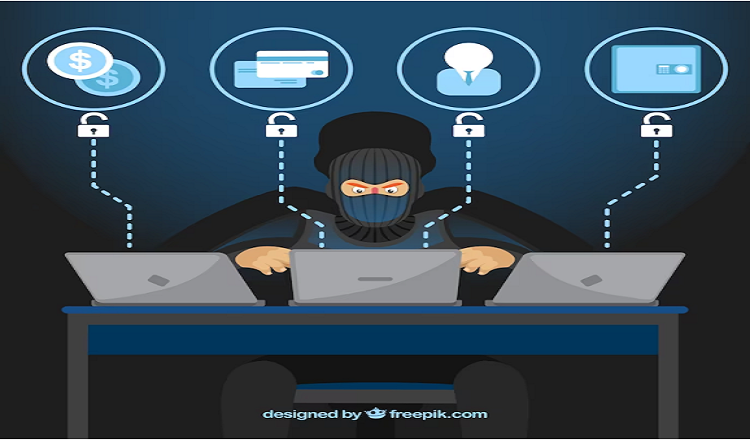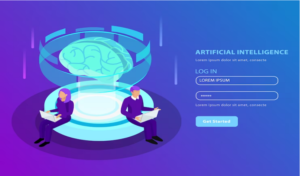Combating phishing and social engineering attacks

Phishing and social engineering are not funny, but they are becoming more and more popular in the United States. The goal of these attacks is to trick people and businesses into giving away private information or doing something that could cause financial loss or a data breach. In this piece, we’ll talk about what phishing and social engineering are, why they’re becoming more of a problem in the US, and why it’s important to stop them.
Phishing attacks are a type of cyber attack that uses email, phone calls, or social media messages to trick people into giving away private information like passwords, credit card numbers, or personal data. On the other hand, social engineering attacks use psychological tricks to get people to share sensitive information or do something that could lead to a data breach or financial loss. These attacks are not only smart, but they also change quickly, which makes them a serious threat to both companies and people.
You can’t say enough about how important it is to stop phishing and social engineering attempts. Businesses can lose a lot of money and image because of these attacks, and people can have their identities stolen and other security measures broken. In the parts that follow, we’ll talk about how people and businesses can protect themselves from phishing and social engineering attacks, as well as the newest tools that can be used to stop them.
Phishing Attacks: What You Need to Know
Phishing attacks are a type of cyber attack that tries to trick people into giving out private information, like their usernames, passwords, credit card numbers, or other personal information. Spear-phishing, whaling, vishing, and smishing are all types of phishing attacks that are meant to target specific people or groups. Some of the most common ways that attackers use phishing to get people to give up private information are fake emails and fake websites.
People can tell if someone is trying to phish them by looking out for suspicious emails or messages that ask for personal or financial information, have language or grammar mistakes, or come from people they don’t know. They should also make sure that links and websites are real before clicking on them, and they should change their passwords often to keep people from getting into their accounts without their permission. Phishing attacks are getting more sophisticated and harder to spot, so it’s important to be careful when dealing with any contact that asks for personal information.
How Social Engineering Attacks Work
Social engineering attacks are a type of cyber attack that uses psychological tricks to get people to share sensitive information or do things that can lead to data breaches or financial loss. There are different kinds of social engineering attacks, such as baiting, pretexting, quid pro quo, and tailgating. These attacks are meant to take advantage of people’s feelings and weaknesses.
Impersonation, in which an attacker pretends to be someone else to get access to private information, and manipulation, in which an attacker gets a victim to do something that could lead to a security breach, are two common types of social engineering. To spot social engineering, people should pay attention to any requests for private information or strange behaviour, like someone following them or trying to get into a building without permission. Social engineering attacks are getting more sophisticated and harder to spot, so it’s important to be careful when dealing with any unexpected contact or requests for personal information.
What Happens When People Use Phishing and Social Engineering?
Attacks like phishing and social engineering have had a big effect on companies and people in the US, and some recent high-profile attacks have made the news. For example, the data breach at Target in 2013 affected more than 40 million people, and the one at Yahoo in 2016 affected more than a billion accounts.
Businesses can lose a lot of money and goodwill because of these attacks. The average cost of a data breach in the United States is believed to be over $8 million. Also, these attacks can lead to data leaks and other security problems, such as malware infections and ransomware attacks, which can compromise the security of data. Personal information, credit card numbers, and medical records can be lost when there is a data breach. This can lead to identity theft, financial scams, and other security problems. So, it’s important for businesses and people to take steps to protect themselves from these attacks and lower their chances of falling victim to these complex cyber dangers.
How to stop attacks like phishing and social engineering
To stop phishing and social engineering attacks, you need a multi-step plan that includes training and awareness programmes for employees, strong passwords and multi-factor authentication, regular updates to software and security, and planning and testing for how to handle an issue.
Training and awareness programmes for employees can help people recognise and react to possible attacks. Using strong passwords and multi-factor authentication can help keep accounts safe and stop unauthorised access. Regular software and security updates can help fix vulnerabilities and stop attackers from taking advantage of them. Planning and testing for incident response can help organisations act quickly and effectively if they are attacked. Businesses and people can protect themselves from the financial and reputational costs of data breaches and other security events by taking these steps.
Technologies to stop social engineering and phishingAttacks
In the US, anti-phishing software and email filters, web blocking and content security, biometric authentication, and security analytics and threat intelligence are all ways to stop phishing and social engineering.
Anti-phishing software and email filters can help find and block malicious emails and links. Web filtering and content security can stop workers from going to unsafe websites and downloading malware. Biometric authentication, like reading your fingerprints or recognising your face, can add an extra layer of protection against identity theft and other security risks. By looking at trends of behaviour and spotting possible threats before they happen, security analytics and threat intelligence can help organisations find and stop possible attacks. Businesses and people can improve their cybersecurity defences and protect themselves from the financial and reputational costs of data breaches and other security events by using these technologies.
Conclusion
In the end, it’s important for companies and people in the USA to take action to stop phishing and social engineering attacks. These attacks can cost people and businesses a lot of money and hurt their reputations. They can also lead to data breaches and other security problems that can hurt people and businesses for a long time.
Businesses and people can work together to stop these attacks by putting in place training and awareness programmes for employees, using strong passwords and multi-factor authentication, updating software and security regularly, and planning and testing how to respond to an attack. Also, technologies like anti-phishing software and email filters, web filtering and content security, biometric identification, security analytics, and threat intelligence can improve cybersecurity defences and protect against these threats.
But it’s important to remember that threats are always changing and that we need to stay alert and change with them. Cybercriminals are always coming up with new ways to take advantage of weaknesses and trick people and companies into falling for their attacks. To stay ahead of these dangers, it’s important to keep up with the latest cybersecurity trends and always review and improve security measures. Businesses and people can protect themselves and their assets from these advanced cyber threats by taking these steps.
Read More You May Like:
- Building a robust cybersecurity strategy for the long term
- Analyzing the role of artificial intelligence and machine learning in cybersecurity
- Understanding the psychology behind cybercrime
- The importance of regulation and compliance in cybersecurity
- The impact of cyber-attacks on businesses and organizations








